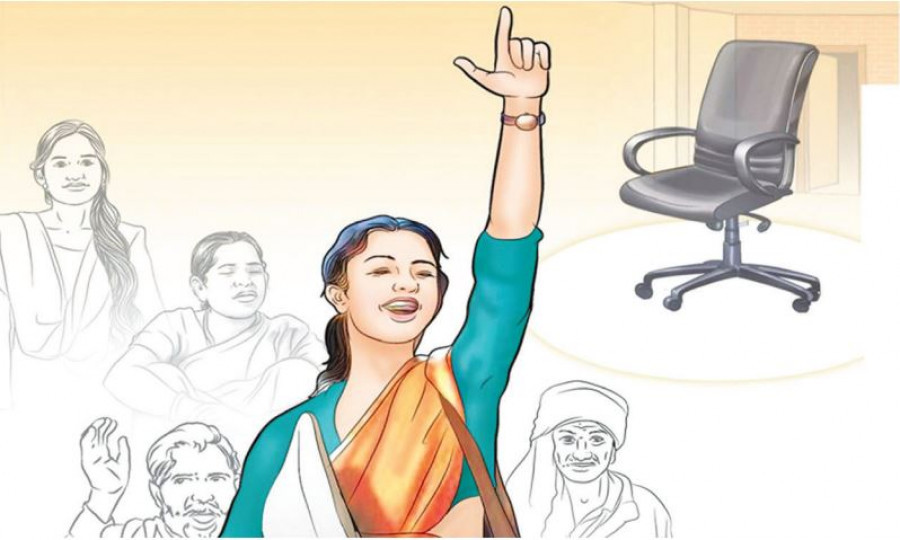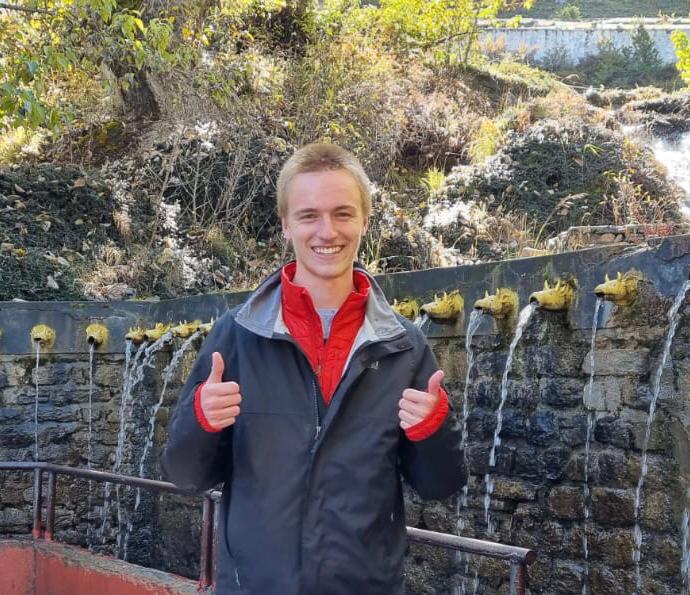Columns
Democracy beyond elections
Without adequate representation, marginalised communities in Nepal are less likely to have their issues addressed.
Narayan Adhikari & Nicholas Budny
When we talk about free elections, we often focus on the process: Voter education, the role of the Election Commission, campaign budgets, and the like. But integrity at the conceptual level is an equally critical piece of the puzzle.
In short, Nepal’s elections suffer from a lack of new ideas. For an election to truly be accountable, it must represent the voice of the people at every stage—in the political parties, the candidates, and their philosophies. In Nepal, this remains a significant barrier to democratic progress. Consider the political landscape since the 2017 elections, in which alliances between political factions have become a new norm for Nepali politics. This year, the alliance between the CPN-Maoist Centre and Nepali Congress will contest the election against the alliance led by the CPN-UML.
Broadly, such partnerships are understandable; most political parties within Nepal promote democratic socialism, and many of their goals align. However, several worries remain.
First, the alliances don’t make ideological sense. The Maoist Centre leans strongly left, whereas the Nepali Congress is centre-left. They represent different segments of the Nepali political spectrum, calling into question why they compete for votes together. Partnerships between political factions are currently motivated by opportunism rather than by ideals. These alliances, especially at the top tier, change interparty dynamics into a game of mergers and acquisitions which fiercely undermine the democratic and electoral process.
Second, such coalitions leave Nepal vulnerable to outside influence. For instance, it was suspected that China's Chinese Communist Party (CCP) played a role in the 2017 alliance between the CPN-UML and CPN-Maoist Centre. While elections represent internal competition, they are also a chance for Nepal to create a unified voice for the country. A political system in which parties serve as proxies will quickly silence that voice. With Nepal growing in geographic, strategic, and economic importance to major powers, this potential consequence of interparty coalitions cannot be ignored. China is already deepening ties through Confucius Institutes and the China People’s Armed Police; the US is likewise attempting to use the Millenium Challenge Corporation and State Partnership Programme to sign Nepal onto its broader Indo-Pacific strategy. If we wish to navigate a balance between these influences, Nepal sorely needs a government that represents its constituents fairly.
Third, conceptual integrity is also hindered by a lack of inclusive representation at the candidate level. For the upcoming general elections, only 9.33 percent of the total candidates for the House of Representatives under the first-past-the-post (FPTP) system are women. For the Provincial Assembly election, this number shrinks to 8.59 percent. The ruling coalitions led by the Nepali Congress and CPN-UML have nominated just 25 women as candidates under the FPTP system. There is only one candidate from the LGBTIQ+ community. Without adequate representation among candidates, marginalised communities in Nepal are less likely to have their issues addressed and structural inequalities will remain.
Fourth, Nepal’s current methods of monitoring representation are also largely ineffective. For example, political leaders have openly prioritised their relatives when submitting closed lists—a system introduced to ensure better representation across castes, classes and communities than through the FPTP system. It is essential to create these avenues for inclusion, but their opacity is being abused.
Fifth, in light of the overwhelming deprioritisation of ideology in Nepal’s elections, it isn’t surprising that voters have grown jaded, further neglecting efforts to hold their politicians accountable. Nowhere is this vicious cycle better seen than in party manifestos, which were recently released in the buildup to the election. These manifestos, which once distinguished political factions on the basis of ideas, have now become a numbers game, with parties announcing competing economic projections for issues such as job creation and social security benefits. With parties predicting double-digit growth rates that dwarf all realistic expectations, the manifesto process has become less about promoting ideology and more about fulfilling old rituals—to almost comedic effect. If parties announced at least a roadmap for the results that they expect to achieve, we could once again foster the kind of political discourse that allows for informed, accountable voting.
Finally, Nepal’s next government could extend voter accessibility to groups that offer unique perspectives. Millions of Nepali migrant workers (estimated to be as many as 3.5 million), while eligible to vote, have no provisions allowing them to do so, disenfranchising them politically. While their remittances power nearly a quarter of Nepal’s GDP, their voices are not represented in governance. In addition to providing them basic citizenship rights, allowing absentee voting for migrants would inject a new perspective that does not currently play a role in Nepali politics. Migrant workers have largely worked in the developed world, and have unique lived experience in the labour market, contributing to a demographic of voters with potentially powerful input on critical issues such as employment and social services. If Nepal continues to lose young workers and thus young votes, election results will pan out with increasing homogeneity, producing the same coalitions, the same candidates, and the same (lack of) ideas.




 5.17°C Kathmandu
5.17°C Kathmandu
















